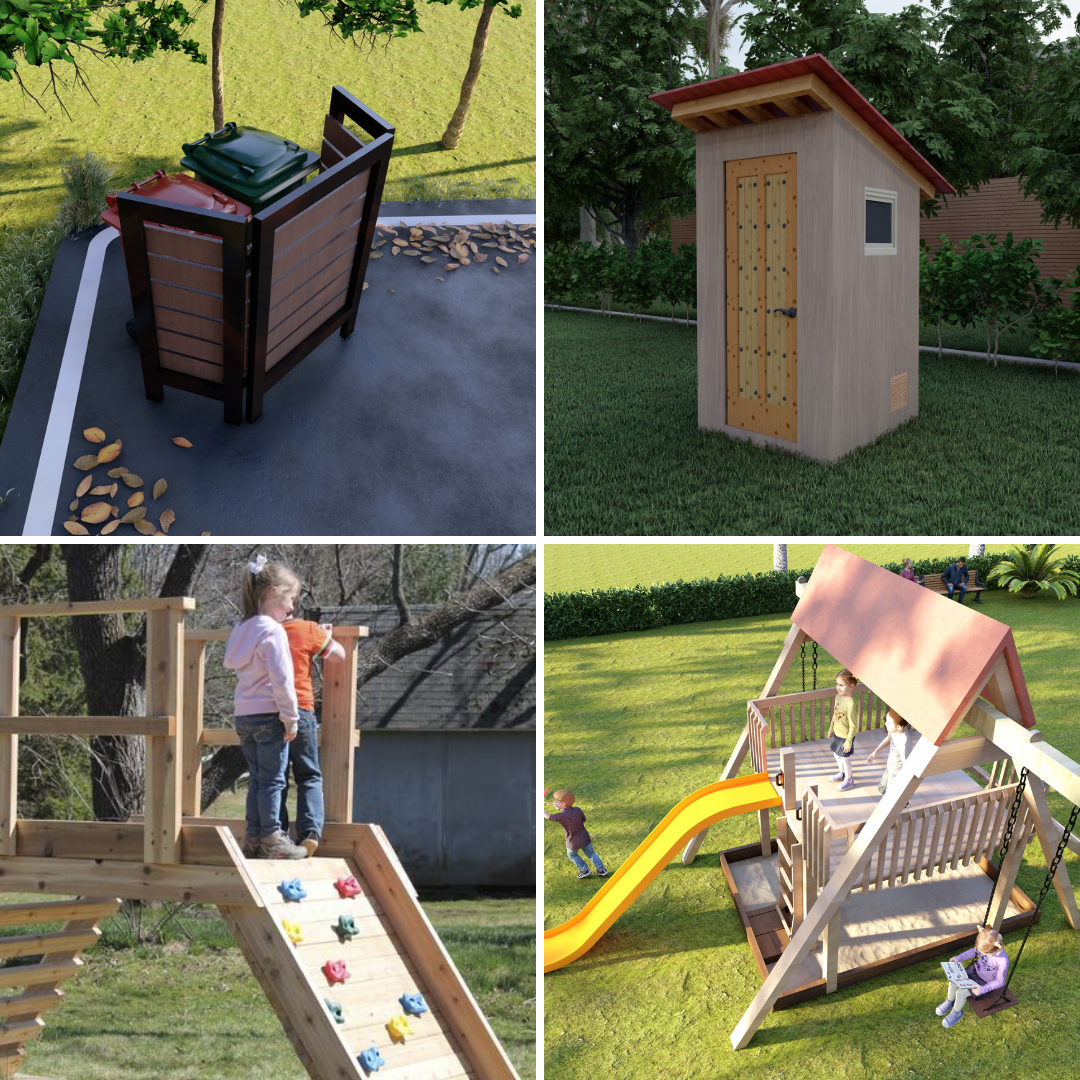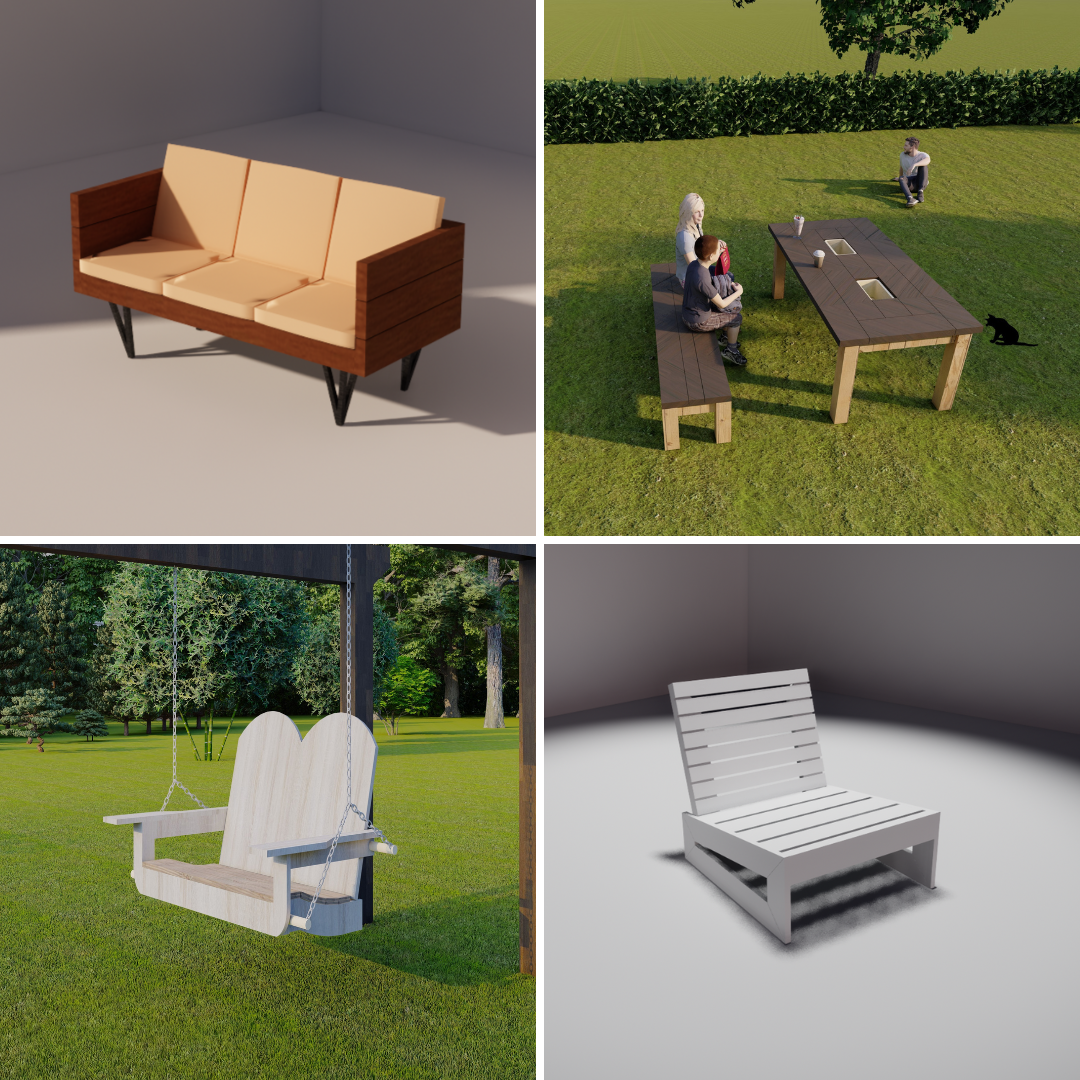
Best Materials for Building a Durable Tiny Home
Share
When you decide to build a tiny home, one of the most important factors to consider is the materials you’ll use. The materials you choose will affect the home’s durability, energy efficiency, aesthetic appeal, and overall cost. Building a tiny home that can withstand the elements while being energy-efficient and long-lasting requires thoughtful material choices. For those looking to create their dream home, our Tiny Home & Cabin Plans offer an array of designs to suit various needs, ensuring you have the right structure for your materials.
If you’re wondering about the best materials for your project, check out our Top Materials for Building a Tiny House: Your Ultimate Guide for a comprehensive breakdown of various options available for building a durable tiny home. This article will cover the exterior, interior, and insulation materials that are essential for creating a tiny home that will stand the test of time. Whether you’re building on a foundation or a trailer, making informed decisions about the materials you use can have a significant impact on the longevity and performance of your tiny home.
1. Exterior Materials: Protecting Your Tiny Home from the Elements
The exterior of your tiny home is its first line of defense against the weather. Choosing the right materials for the outside of your home will help ensure that it remains safe, comfortable, and attractive, regardless of the climate. Weather-resistant materials will prevent issues like water damage, rot, and mold, keeping your tiny home durable for years to come.
Wood SidingWood is a classic material for tiny home exteriors. Its natural beauty and great insulating properties make it a top choice. Cedar and redwood are popular options due to their natural resistance to rot and insects. However, wood requires regular maintenance to protect it from the elements. In wet climates, treated wood or a combination of wood and another material like metal may be the better option.
Cost Range: $5–$15 per square foot.
Metal SidingMetal siding, especially steel or aluminum, offers excellent durability and is resistant to a wide range of weather conditions. It’s particularly well-suited for tiny homes that need to endure heavy rain, snow, or even fire. Metal siding requires less maintenance than wood, although it may get scratched or dented over time. Many homeowners love the modern aesthetic of metal siding, especially for a contemporary tiny home design.
Cost Range: $6–$12 per square foot.
Composite SidingComposite materials like fiber cement or engineered wood are great for tiny homes, offering the look of wood without as much maintenance. Fiber cement is made from a blend of sand, cement, and cellulose fibers, making it incredibly durable, fire-resistant, and pest-resistant. Engineered wood, which is made from wood fibers and adhesives, provides the appearance of wood but is more affordable and requires less upkeep.
Cost Range: $5–$10 per square foot.
These exterior materials provide both protection and aesthetics, making them key to building a long-lasting and beautiful tiny home. By considering factors like your local climate and your home’s design, you can select the perfect materials for your needs.
2. Insulation: Ensuring Comfort and Energy Efficiency
Tiny homes tend to heat up and cool down quickly due to their small size. This makes insulation a crucial aspect of building a comfortable, energy-efficient home. Choosing the right insulation material will ensure your home stays warm in the winter and cool in the summer while minimizing energy costs.
Spray Foam InsulationSpray foam insulation is a top choice for tiny homes, as it provides excellent coverage and air sealing. The foam expands upon application, filling gaps and cracks to create an airtight seal that prevents heat loss. Spray foam has a high R-value, which means it provides superior thermal resistance compared to other materials. It’s perfect for those who want to maximize energy efficiency in their tiny home, though it’s one of the more expensive insulation options.
Cost Range: $1–$2 per board foot.
Fiberglass InsulationFiberglass is one of the most affordable and widely available insulation options. It comes in batts, rolls, or loose-fill, making it easy to install. While fiberglass doesn’t provide as tight of a seal as spray foam, it still offers solid performance and good value for the price. It's an ideal choice for mild climates or for those on a budget, but you may need to add extra layers for better insulation in extreme weather.
Cost Range: $0.50–$1 per square foot.
Cotton InsulationFor a more eco-friendly insulation option, cotton insulation made from recycled cotton fibers is a sustainable choice. Cotton is soft, non-toxic, and easy to handle, making it a safe option for both DIY builders and professionals. While it’s not as effective in extreme temperatures as spray foam or fiberglass, it’s a good option for those looking to minimize their environmental footprint.
Cost Range: $1.50–$3 per square foot.
Selecting the right insulation material will ensure your tiny home stays energy-efficient and comfortable year-round. Depending on your climate and budget, you can choose the material that best suits your needs while keeping long-term energy savings in mind.
3. Interior Materials: Combining Functionality and Durability
When it comes to the interior of your tiny home, it’s important to choose materials that are both practical and visually appealing. Since space is limited in a tiny home, every decision should focus on maximizing functionality while maintaining an aesthetic you love. From flooring to cabinetry, the materials you choose for the interior will need to be durable and able to withstand the wear and tear of everyday life.
Wood FlooringWood is a classic and versatile option for flooring in tiny homes. It provides a warm, natural feel that complements almost any design style. Hardwoods like oak, maple, or bamboo are durable and can last for years with proper care. Bamboo is also a sustainable and affordable option, and it’s known for its strength and resistance to moisture.
Cost Range for Flooring: $3–$10 per square foot.
Vinyl and Laminate FlooringVinyl and laminate flooring are affordable, low-maintenance alternatives to wood. Vinyl is waterproof and easy to clean, making it a great option for kitchens and bathrooms. Laminate offers the look of hardwood at a fraction of the price, making it a popular choice for those on a budget. While not as durable as wood, both vinyl and laminate flooring can last for many years with proper care.
Cost Range for Vinyl Flooring: $1–$4 per square foot.
Cost Range for Laminate Flooring: $2–$5 per square foot.
For a sleek, modern look, stainless steel appliances and fixtures are a fantastic choice. They’re durable, easy to clean, and resistant to corrosion, making them perfect for tiny home kitchens and bathrooms. Stainless steel sinks, faucets, and appliances offer long-term value and a polished aesthetic, though they can be more expensive upfront.
Cost Range for Appliances: $300–$1,000+
Cost Range for Fixtures: $50–$200+
The materials you choose for your interior should prioritize both durability and aesthetics. Since tiny homes often feature limited space, investing in long-lasting materials can help you create a beautiful, functional home without the need for frequent replacements or repairs.
Final Thoughts
The materials you select for your tiny home are essential for creating a durable, energy-efficient, and aesthetically pleasing living space. Whether you choose wood, metal, or composite materials for the exterior, spray foam or fiberglass for insulation, or bamboo or vinyl for the interior, each decision will impact your tiny home’s performance and longevity. By carefully considering your needs and local climate, you can ensure that your tiny home will provide comfort, security, and sustainability for many years to come.
If you're ready to start designing your tiny home, explore our tiny home plans below for expert designs and inspiration that will help guide your project every step of the way.







